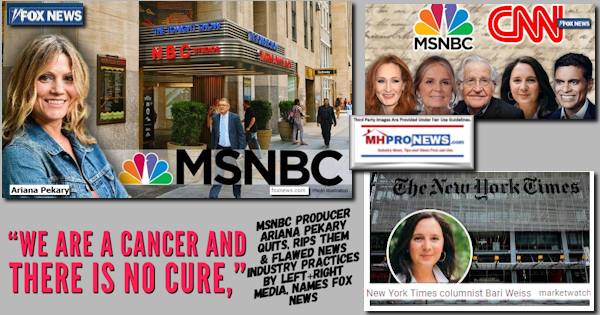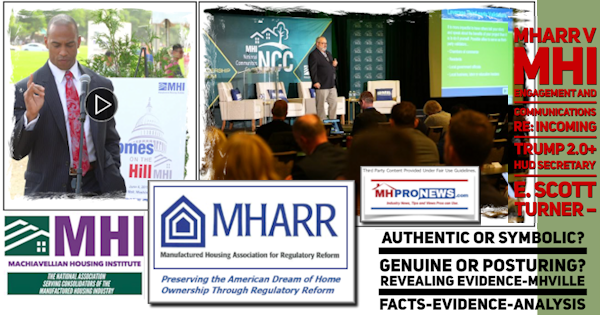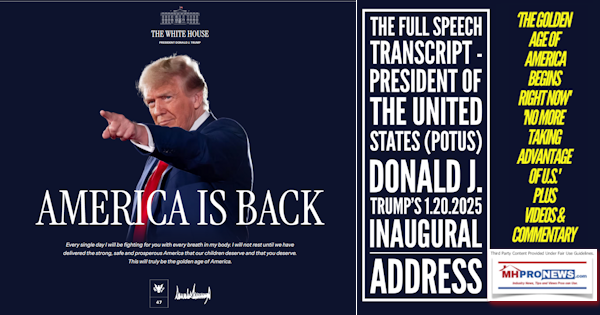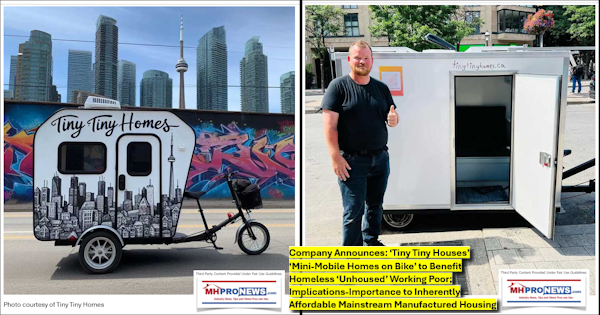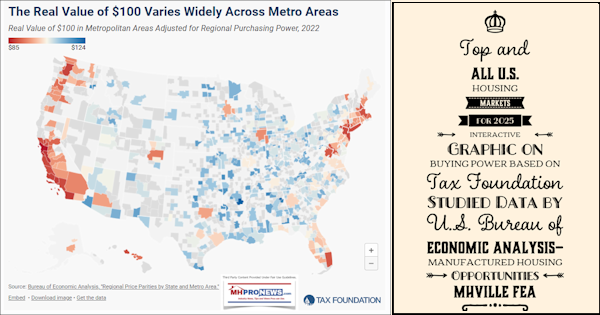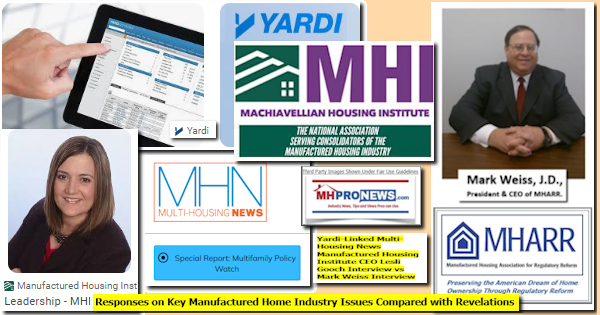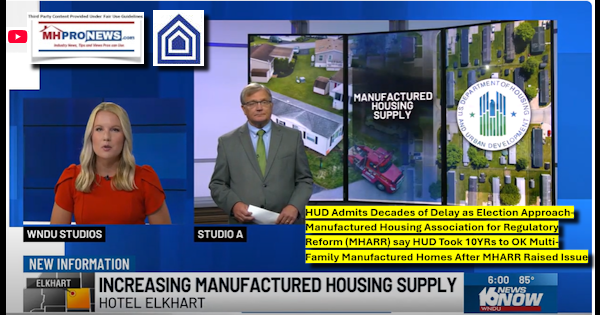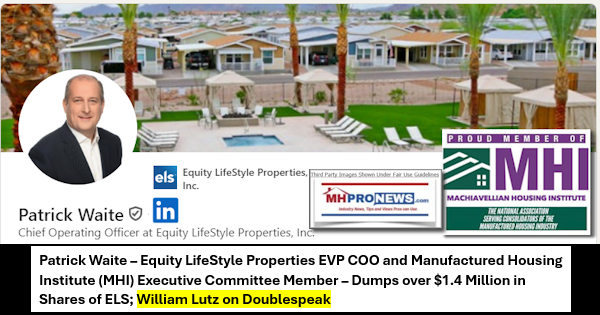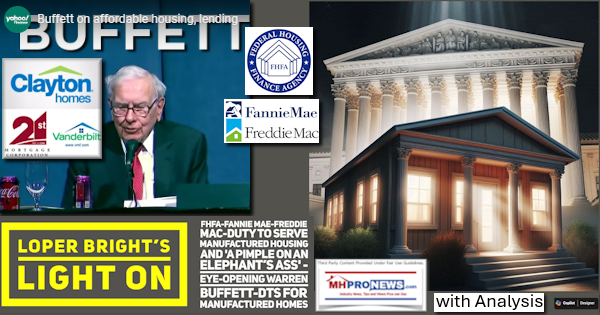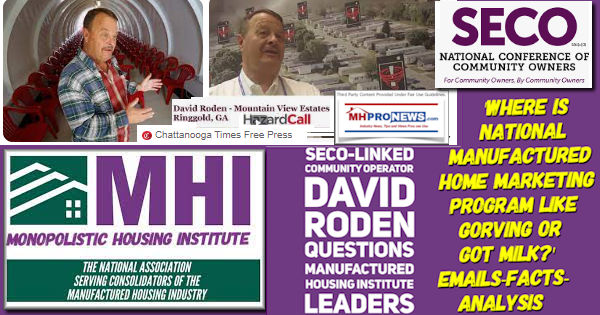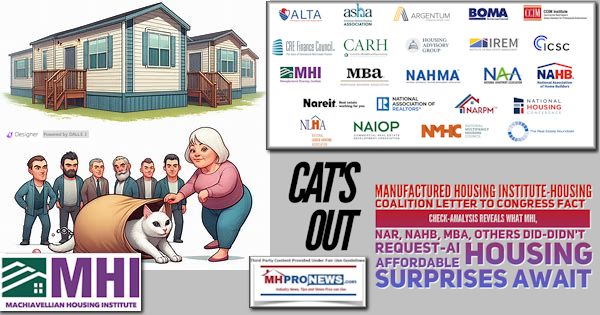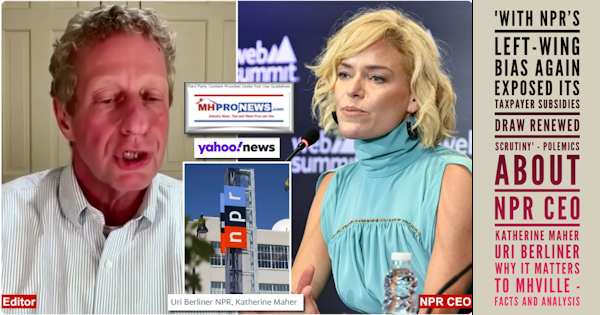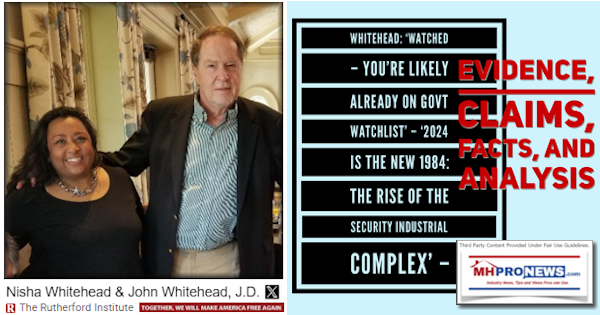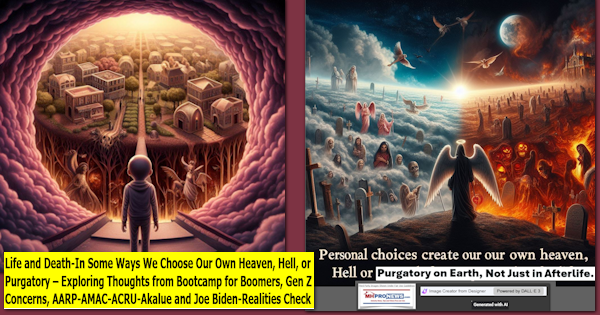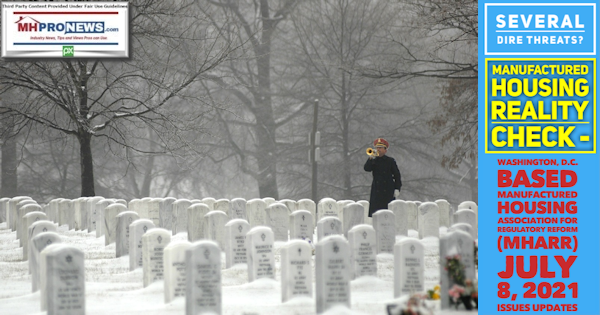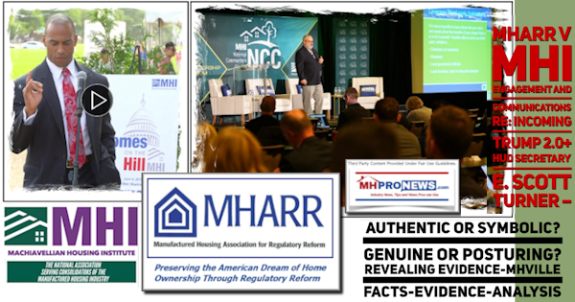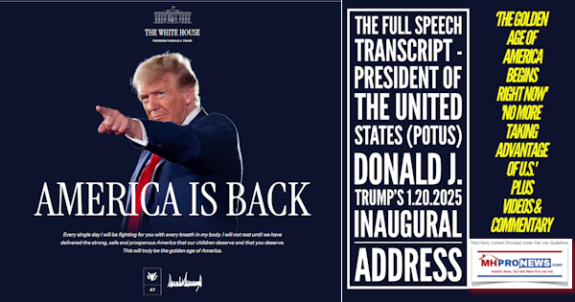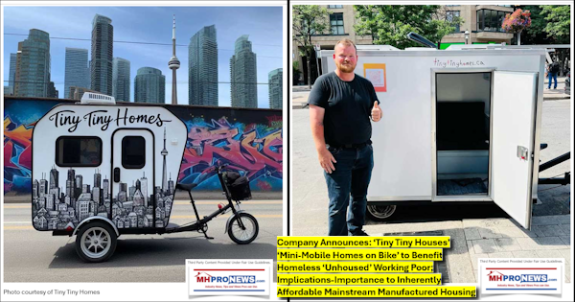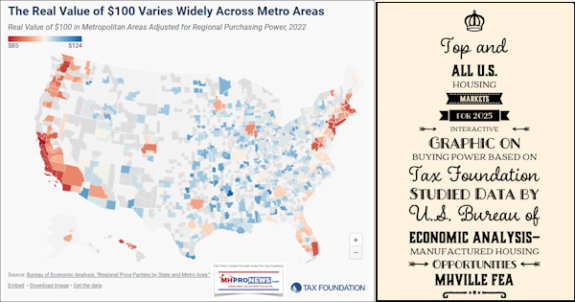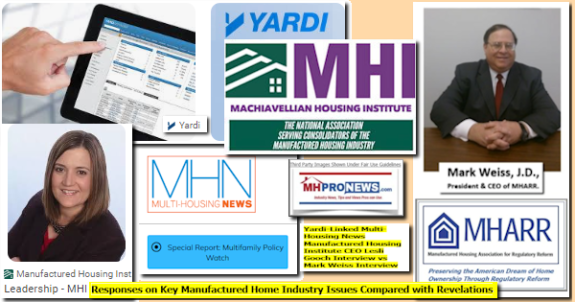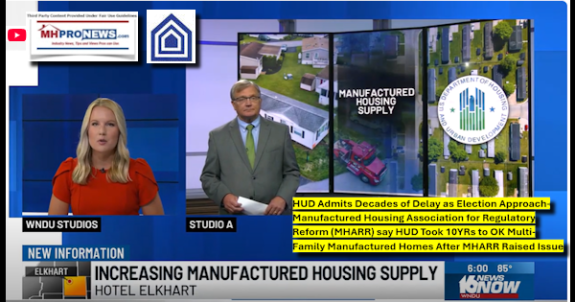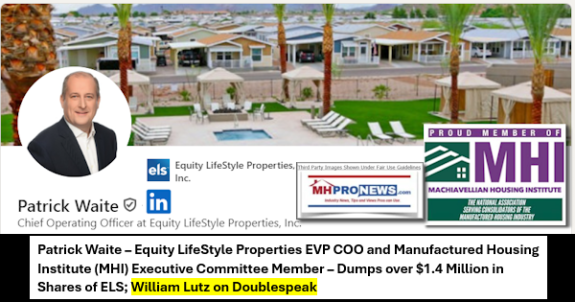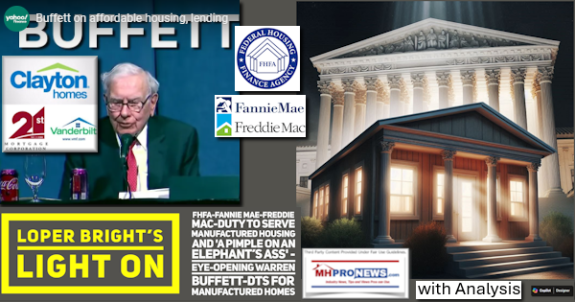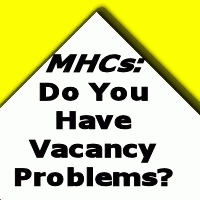The following is a media release by the Washington, D.C. based Manufactured Housing Association for Regulatory Reform (MHARR). It will be followed by some pull quotes from the Manufactured Housing Institute, plus more information, MHProNews analysis and commentary.
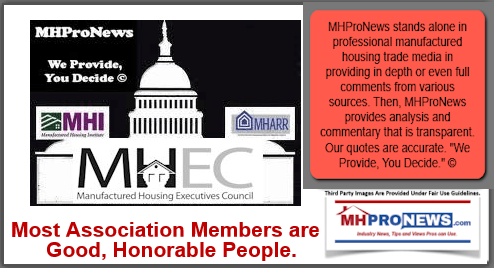
REPORT AND ANALYSIS
IN THIS REPORT: JULY 8, 2021
- INDUSTRY POST-PRODUCTION FAILURES HIT HOME
- MHARR CALLS FOR CHANGES FROM NEW FHFA DIRECTOR
- MHARR BLASTS NEW FANNIE/FREDDIE DTS PLANS
- DOE PLANNING EXCESSIVE MH ENERGY STANDARDS
- DOE TAKES FIRST STEP TARGETING HUD CODE HOMES
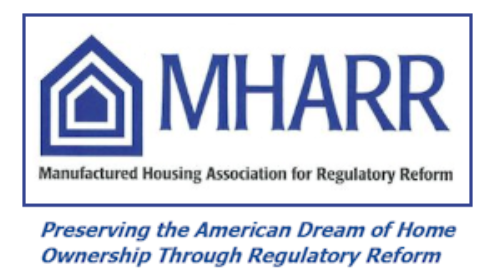 INDUSTRY FAILURES ON POST-PRODUCTION ISSUES COME HOME TO ROOST
INDUSTRY FAILURES ON POST-PRODUCTION ISSUES COME HOME TO ROOST
In a “Fact Sheet” coinciding with the Biden Administration’s first one-hundred days in office, the current leadership at HUD states that “In the first 100 days of the Biden-Harris Administration, Secretary Fudge and HUD have delivered on urgent housing needs and laid the foundations to tackle longer-term housing challenges.” The “Fact Sheet” then goes on to list billions of dollars in HUD spending on various matters, some having only a tenuous connection with “housing.” For example, the “Fact Sheet” touts:
- A “$450 million investment to provide … funding to Native American communities across the nation;”
- “2.5 billion to renew support to thousands of local homeless assistance programs across the nation;”
- “$5 billion” for “roughly 70,000 vouchers to people experiencing or at risk of experiencing homelessness;”
- “$700 million … to help states produce more affordable housing for extremely low and very low-income households;”
- “$14 billion dollars … in federal disaster recovery and resilience funding for Puerto Rico;”
- “$742 million for affordable housing activities in Tribal communities;” and
- “$5 million to promote lead hazard reduction and weatherization programs; among other things.
All told, the “Fact Sheet” lists more than $31 billion in HUD spending, just during the first one hundred days of the new administration. While HUD thus pours incredible sums of scarce taxpayer dollars into (mostly) old programs that have failed, over the course of decades, to appreciably change the state of homelessness, housing availability or housing affordability in the United States, the Department continues to effectively ignore the affordable housing and homeownership solution that is right under its own figurative “nose” – i.e., HUD Code manufactured housing. And, even worse, despite continuing promises to the contrary, the Department continues to treat manufactured housing – and the Americans who rely on manufactured housing for affordable homeownership – with a neglect that has allowed affordable manufactured homes to be excluded from many communities across the nation and has forced manufactured home purchasers to pay higher-than-competitive market interest rates to the largest corporate conglomerates for manufactured home purchase loans.
Why has this happened? And more importantly, why does it continue? Why does HUD, the federal government more broadly and, indeed, government at all levels, in the face of an affordable housing crisis, subject and allow federally-sanctioned, federally-regulated and federally-approved, high quality, inherently affordable manufactured homes to be subjected to discriminatory post-production edicts and policies that have needlessly constrained and limited the availability of manufactured homes? And why does this continue despite an affirmative mandate in federal law for HUD to promote, advance and “facilitate the availability of affordable manufactured homes.” Or, put differently, why has HUD felt itself free, since the adoption of the Manufactured Housing Improvement Act of 2000, to ignore and essentially disregard its responsibility, obligation and mission to ensure the availability of manufactured homes for all Americans, through the elimination of baseless, post-production restrictions and exclusions?
A prime opportunity to fundamentally change this pattern — which combines equal parts of neglect and active subversion of the 2000 reform law — was available to the broader industry and particularly its erstwhile post-production sector representation through the Manufactured Housing Institute (MHI) during the Trump Administration and Secretary Ben Carson’s four-year tenure at HUD. During those four years, that supposed representation could and should have aggressively sought substantive post-production policy changes at HUD, to include an express statement of federal preemption of discriminatory manufactured housing zoning exclusions, as well as a commitment to the resumption of market-significant manufactured home consumer financing through the Federal Housing Administration (FHA) and beyond. Instead, though, both of those fundamental impediments continued unabated – and, in fact, arguably worsened — while the industry’s largest corporate conglomerates got positive publicity, verbal plaudits and empty promises from HUD leadership.
And now, six months into the new administration, despite yet more verbal promises, the production and utilization of manufactured housing continues to languish at levels far below historic norms, hamstrung by the same limitations that have restricted the manufactured housing market for more than a decade and have undermined its ability to provide a significant remedy to the nation’s housing and homelessness crisis – i.e., discriminatory and exclusionary zoning restrictions and a lack of market-competitive consumer financing due to the refusal of Fannie Mae, Freddie Mac and the Federal Housing Finance Agency (FHFA) to fully implement the Duty to Serve mandate with respect to the vast bulk of the manufactured housing market. As a result, a quality product with the federal government’s literal “stamp of approval” continues to serve only a fraction of its potential market.
While the lost opportunities of the last four years cannot be re-captured, the industry cannot afford a continuing pattern of failure within the post-production sector. Insofar as MHI, in the absence of an independent, national post-production association, has accepted responsibility for – and dues from – the industry’s post-production sector, it is past time that it be held accountable for the ongoing major problems that continue to plague that sector, with far-reaching negative impacts on the entire industry and consumers as well.
MHARR CALLS FOR NEW DIRECTION AFTER REMOVAL OF FHFA DIRECTOR
Within hours after the June 23, 2021, Supreme Court decision in Collins v. Yellen, holding that the structure of the Federal Housing Finance Agency (FHFA) – with a director that could only be removed by the President for cause – is unconstitutional, President Biden removed the former Trump-appointed FHFA director Mark Calabria, and named Ms. Sandra Thompson (previously an FHFA Assistant Director) as FHFA Acting Director. Given FHFA’s role as the federal regulator of Fannie Mae and Freddie Mac, and its supervision of the Government Sponsored Enterprises’ (GSEs) implementation of the statutory Duty to Serve Underserved Markets (DTS) mandate, this change in leadership could be significant for both the HUD Code manufactured housing industry and American consumers of affordable housing.
During his multi-year tenure at FHFA, former director Calabria did nothing substantive to advance the implementation of DTS within the manufactured housing market. This was particularly the case with respect to the personal property, or “chattel” loans, which provide purchase money financing for nearly 80% of the manufactured housing market. Since the inception of DTS, Fannie Mae and Freddie Mac have provided secondary market/securitization support for exactly zero manufactured housing personal property loans and, in fact, have arguably done all that they could to defy the market-significant implementation of DTS for manufactured housing. Indeed, during Director Calabria’s tenure, Fannie Mae and Freddie Mac actually backtracked from proposals for chattel loan “pilot programs” contained in their initial DTS “implementation” plans, leaving hundreds-of-thousands of consumers at the mercy of high-interest specialty lenders affiliated with the industry’s largest corporate conglomerates. FHFA did nothing as the GSEs eliminated those pilot programs and simultaneously acted to divert DTS support from the mainstream HUD Code market to more costly hybrid “MH Advantage,” “ChoiceHome” and “Cross-Mod” products which were touted as being “more like” site-built homes. As a result, while Director Calabria’s FHFA reported to Congress, on multiple occasions, the ruse that Fannie Mae and Freddie Mac were “in compliance” with their DTS obligations, the reality is that the GSEs have never served more than 5-6% of the entire market for new HUD Code manufactured homes under DTS and have actually left the vast bulk of mainstream manufactured housing consumers completely unserved.
Against this backdrop, the appointment of Ms. Thompson potentially offers an opportunity for the industry and consumers to seek a genuine commitment from FHFA to the full and robust implementation of DTS – on a market-significant basis — within the manufactured housing sector. As a result of extensive engagement with Ms. Thompson in 2020, by MHARR and MHARR member manufacturers (as described in a June 28, 2021, communication to Ms. Thompson – see copy attached), there is perhaps no one at the senior executive level at FHFA, with the same level of knowledge concerning DTS and the manufactured housing industry than Ms. Thompson. Specifically, Ms. Thompson is aware of the key role that affordable, mainstream manufactured housing plays in the broader housing market, as well as the critical need for secondary market and securitization support for mainstream HUD Code homes in order to fulfill both the promise and remedial purpose of DTS after years subversion by Fannie Mae and Freddie Mac as they sought to limit DTS to only the most costly types of real estate-based and hybrid “manufactured homes.”
The first test of Ms. Thompson’s leadership regarding manufactured home consumer financing will come with respect to the 2022-2024 proposed DTS “implementation” plans filed recently by Fannie Mae and Freddie Mac. Those plans, if approved by FHFA, would totally eliminate any DTS support for HUD Code personal property loans for their entire coverage period, pushing even the potential start of any GSE chattel loan support to a point at least sixteen years following the enactment of DTS, representing yet another failure by the industry’s post-production representation to ensure the full and legitimate implementation of a good law for the industry and its consumers. As MHARR emphasized in its June 28, 2021, communication to Ms. Thompson, and will stress once again in its comments at an upcoming FHFA DTS “listening session” on July 14, 2021, such a delay would be totally inconsistent with the objectives and remedial purposes of DTS and would be unacceptable to the industry and American consumers in need of genuinely affordable housing and homeownership. MHARR, accordingly, will seek a fundamental change in direction at FHFA to finally begin the full implementation of DTS, consistent with the affordable housing policies of the Biden Administration.
MHARR COMMENTS BLAST LATEST DTS “IMPLEMENTATION” PLANS
MHARR, in written comments that will be filed with the Federal Housing Finance Agency (FHFA) and offered in verbal form at a DTS “listening session” on July 14, 2021, has blasted the deletion of any manufactured home personal property loan support mechanisms from the latest DTS “implementation” plans filed by Fannie Mae and Freddie Mac in May 2021. Those proposed plans, which cover the period from 2022 to 2024 and must be approved by FHFA in its capacity as the Government Sponsored Enterprises’ (GSEs) federal regulator, detail programs designed, among other things, to provide support for manufactured housing real estate loans and loans on certain manufactured housing communities, but exclude any type of secondary market or securitization support for the vast bulk of manufactured home purchase loans that are secured by the home itself, without land.
For more than a decade since the enactment of the DTS mandate – which expressly includes and authorizes support for – manufactured home personal property loans, Fannie Mae and Freddie Mac have touted their alleged intent to ultimately provide secondary market and securitization support for such loans, which comprise 76% of all manufactured housing purchase loans according to data compiled by the U.S. Census Bureau. Thus, previous plans and modifications filed by the GSEs under DTS have provided, in multiple instances, for DTS personal property loan “pilot programs” in the later years of the periods covered by those documents. Such pilot programs were proposed, ostensibly, in order to allow the GSEs to develop loan performance data for chattel loans within the manufactured housing sub-market and, thereby, provide a basis for the GSEs to develop and price more extensive chattel support products in future plans.
At each subsequent step, though, Fannie Mae and Freddie Mac have consistently retreated from their earlier commitments to explore and analyze the chattel submarket, to the point that their 2022-2024 proposed plans contain no references to manufactured home chattel loans whatsoever, and no programs or products whatsoever to even begin serving that submarket. As a result, the 2022-2024 DTS proposed plans effectively ignore – and fail to serve, in any manner – nearly 80% of the total manufactured housing market, while existing DTS programs serve only 5-6% of the total market. Put simply, as MHARR has pointed out previously, such levels are not in compliance with any type of reasonable construction or understanding of DTS and, in fact, constitute a repudiation of both DTS and Congress’ mandate for the GSEs to finally begin serving the manufactured housing market.
It is therefore incumbent on the new leadership at FHFA – put in place by the Biden Administration – to finally begin complying with DTS as written and as designed by Congress, to remedy decades of discrimination by Fannie Mae and Freddie Mac against manufactured housing and lower and moderate-income manufactured housing consumers. As a result, Fannie Mae and Freddie Mac’s proposed 2022-2024 DTS plans, with respect to manufactured housing, should be disapproved by FHFA, with a directive to both Enterprises to finally begin serving the mainstream, affordable manufactured housing market in a market-significant manner, as intended by DTS.
DOE DEVELOPING EXCESSIVE MANUFACTURED HOUSING STANDARDS
The U.S. Department of Energy (DOE) has started to release certain limited information concerning its development of manufactured housing energy standards under section 413 of the Energy Independence and Security Act of 2008 (EISA). Some of that information was offered by DOE at a June 10, 2021, meeting of the statutory Manufactured Housing Consensus Committee (MHCC). Other limited details were published in a Federal Register notice on July 7, 2021 (see, article below).
Not surprisingly, given DOE’s track record of deception and deceit in connection with the development of manufactured housing ”energy” standards, copies of the DOE energy presentation were not made available to MHCC members (or program stakeholders) in advance of the meeting.
Nor have the June 10, 2021 meeting minutes, including a copy of the DOE presentation, been posted on the HUD manufactured housing program website, now some four weeks following the meeting.
Notwithstanding this bad faith refusal to make DOE’s June 10, 2021 presentation available to MHCC members and program stakeholders, industry members will recall that EISA tasked DOE with developing manufactured housing energy standards “in consultation” with HUD and the MHCC, based upon the International Energy Conservation Code (IECC) maintained by the International Code Council (ICC). That directive ultimately led to a sham DOE standards development process that has now spanned nearly 15 years. The principal feature of that process (to date) was a 2014-2016 “negotiated rulemaking” sought by the Manufactured Housing Institute (MHI) and energy special interests, which led to a disastrous 2016 proposed rule. That rule, based on MHARR estimates at the time, would have increased the retail level cost of manufactured homes by at least $4,600 to $5,800, and would have excluded literally millions of Americans from the manufactured housing market (and from homeownership altogether) according to price exclusion metrics developed by the National Association of Home Builders (NAHB). MHARR cast the one and only “no” vote against this proposal in the negotiated rulemaking “Working Group,” (which included multiple MHI members) and has continued to aggressively oppose the adoption of punitive, unnecessary, high-cost “energy” standards promoted by special interests ever since. While MHI, to its credit, subsequently changed position and opposed the 2016 proposed rule, the entire trajectory of this matter could and would have been different if it had never sought or supported the “negotiated rulemaking” process or the negotiated Working Group proposal – a point that could become relevant in any future litigation.
While the Trump Administration subsequently withdrew the illegitimate 2016 DOE proposed rule, there was not sufficient pressure from the entire industry to set aside all DOE activity on this issue. Consequently, when DOE was confronted with a lawsuit by “environmental” activists in 2018 demanding the adoption of manufactured housing energy standards, it agreed to a consent order – notwithstanding aggressive MHARR opposition – which will now require the promulgation of proposed energy standards by August 16, 2021, and the adoption of final standards in 2022.
Given the mandatory “consultation” required with respect to energy standards by EISA, the “presentation” provided to the MHCC by DOE at the meeting was dismissive at best, with key details omitted, no materials provided in advance of the meeting, and virtually no substantive engagement with the MHCC. Moreover, when pressed by MHARR’s representative, DOE would not specifically commit to any further engagement at all with the Committee. Instead, Committee members were simply informed that the impending standards will be based on the 2021 version of the IECC. DOE failed to provide, however, any specific information regarding the cost of its proposed rule.
And even when those alleged “costs” ultimately are provided, that will not be the end of the matter, as EISA requires continuing updates to the standards, based on future revisions of the IECC. Thus, any initial compliance costs to meet the first set of DOE standards will be just the beginning, as costs will continue to steadily increase, even for those manufacturers who may already be compliant with (or close to compliant with) the 2021 IECC. It is thus noteworthy that even manufactured housing producers currently in compliance with the existing IECC, will likely be compelled to adopt – on a mandatory basis – future enhancements to the IECC, with additional costs imposed on potential purchasers.
MHARR, in its comments to the Committee, made clear that it will continue to vigorously object to any energy standards that would needlessly increase the cost of manufactured housing, undermine legitimate consumer choice regarding energy features, or exclude millions of lower and moderate-income Americans from the nation’s most affordable source of non-subsidized, inherently affordable homeownership. MHARR also urged the MHCC, in the strongest possible terms: (1) To be assertive in dealing with DOE; (2) To demand that DOE fully engage with the Committee in order to provide a legitimate opportunity for the MHCC to express its views on the proposed standards; and (3) To ensure that the proposed standards do not conflict or interfere with the goals and objectives of federal manufactured housing law.
Further, MHARR reiterated its vehement opposition to any energy standards based upon or in any way related to the totally-discredited 2014-2016 “negotiated rulemaking” process or the 2016 DOE proposed rule. In addition, MHARR stated that the 2021 IECC would not and cannot provide a legitimate basis for manufactured housing energy standards because of alleged irregularities with the 2021 IECC voting process as documented by NAHB, and the “governmental consensus process” used to adopt those standards – as described in the March 2021 edition of “MHARR—Issues and Perspectives,” — which gave the final vote on 2021 IECC measures to state and local building officials who have been essentially excluded from the regulation of manufactured housing construction for the past 45 years. Indeed, that entire “governmental consensus process” has now been scrapped for the IECC arising at least in part from the irregularities cited by NAHB.
With a proposed rule expected from DOE by the August 16, 2021, court-ordered deadline, MHARR will continue to take all necessary and appropriate actions to stop the imposition of extreme, illegitimate, discriminatory and never-ending energy standards targeted specifically at manufactured homes and manufactured housing consumers. This includes, but will not be limited to, legal action to prevent the imposition of excessive or unreasonable standards and the perpetual “ratcheting-up” of those standards as demanded by EISA.
DOE TAKES FIRST STEP TARGETING MANUFACTURED HOUSING
DOE, in a July 7, 2021, Federal Register notice, has taken the first formal step toward the development and imposition of manufactured housing energy standards pursuant to section 413 of the Energy Independence and Security Act of 2008 (EISA). In that notice, DOE states its intent to prepare an Environmental Impact Statement in connection with its impending manufactured housing energy standards, “to evaluate the potential impacts to the human environment associated with the proposed energy standards for manufactured housing.” Consistent with its June 10, 2021 presentation to the federal Manufactured Housing Consensus Committee (MHCC), the notice states that DOE “intends to propose new energy conservation standards for manufactured housing that are based on the 2021 [International Energy Conservation Code].” DOE further maintains that its “dual (sic) purpose is to … achieve the national goals of (a) saving energy, (b) reducing energy costs for manufactured homeowners, and (c) reducing outdoor pollutants and greenhouse gasses.” The notice thus states that DOE will be “proposing energy efficiency standards for manufactured housing that relate to the building thermal envelope; air sealing; installation of insulation; duct sealing; heating; ventilation and air conditioning (HVAC); service hot water systems; mechanical ventilation fan efficiency; and heating and cooling equipment sizing.”
Addressed only as an afterthought (at best) in the DOE notice is the entire issue of purchase price affordability, which is – and has been for nearly 50 years – a primary goal of federal manufactured housing law (and HUD manufactured housing regulation) as set forth in the National Manufactured Housing Construction and Safety Standards Act of 1974 and the Manufactured Housing Improvement Act of 2000. Thus, while DOE contends that one of its “dual purposes” in proceeding with manufactured housing energy standards is to “reduc[e] energy costs for manufactured homeowners” (i.e., so-called “life-cycle” costs) it totally ignores, in its principal presentation: (1) the purchase price impact of the measures that its standards will purportedly address; (2) the impact of those purchase price increases on the future affordability of manufactured homes for lower and moderate-income American families; (3) the number of lower and moderate-income families that will be totally excluded from the manufactured housing market (and from homeownership altogether) by such purchase price increases; (4) the socio-economic damage that will flow from that level of housing market exclusion; and (5) the additional costs and dislocations flowing from the perpetual “ratcheting-up” of manufactured housing energy standards required by EISA.
Instead, devastating manufactured housing purchase price impacts will apparently – according to the DOE notice – only be considered in relation to a so-called “action alternative” that would “used a tiered approach to address affordability and cost-effectiveness concerns with respect to energy cost savings and the cost of efficiency improvements relative to the retail price of manufactured housing.” While this so-called “tiered” approach is reminiscent of the 2018 alternative manufactured housing energy standard regulatory approach floated by the Trump Administration, it remains to be seen whether this supposed “alternative” will be legitimate or just another in a series of DOE shams. That, in turn, will depend on: (1) the participation parameters of any such “tiered” approach (i.e., which purchasers, at which retail price level(s) will be eligible) and (2) the legitimacy of cost amounts attributed to the various new DOE energy standards that would be imposed (i.e., whether the alleged up-front costs attributed to energy measures required by DOE are legitimate and reflective of actual market conditions, or an artificial construct – as has occurred before with DOE).
In either event, the Notice further indicates that DOE intends to retain the current HUD climate zones and that the new DOE standards would apply to “homes manufactured on or after one year following the publication of a final [DOE] rule….”
Again, MHARR plans to take all necessary and appropriate actions to stop the imposition of extreme, illegitimate, discriminatory and never-ending energy standards targeted specifically at manufactured homes and manufactured housing consumers. This includes, but will not be limited to, legal action to prevent the imposition of excessive, unreasonable and constantly-increasing standards. ##
##
A routine footer to MHARR releases is this statement. “The Manufactured Housing Association for Regulatory Reform is a Washington, D.C.-based national trade association representing the views and interests of independent producers of federally-regulated manufactured housing.”
Additional Information, MHProNews Analysis and Commentary
Several broad and general points could be made. In no specific order of importance are the following.
- MHI suspended their reports on manufactured home production and shipment levels to their own readers and members months ago. By contrast, MHARR has consistently provided facts and evidence in a manner that matters from the vantage point of the industry’s independents and consumers.
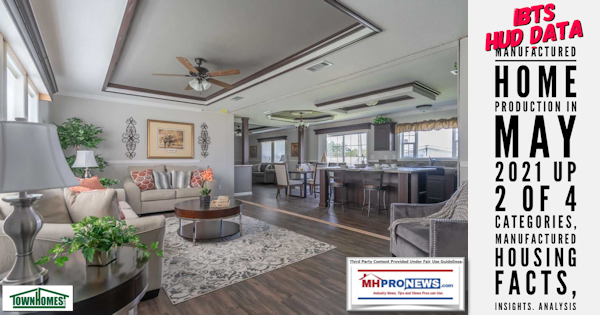
- MHI can’t have it both ways. On the surface, they often appear to be positioning themselves in a manner that is quite similar to MHARR. But at the same time, far larger and deeper-pockets MHI demonstrates that they superior access. When given the opportunity to hold public officials accountable, MHI is either fumbling routinely or deliberately allowing public officials off the hook. A key example is shown in the report below. MHI having claimed that they hand-feed the questions from a Democratic and Republican Senator to HUD Secretary Marcia Fudge, the question they asked was mere fluff. For instance – why didn’t MHI have those U.S. Senators ask Secretary Fudge about the full and proper enforcement of the Manufactured Housing Improvement Act of 2000? Or why didn’t they press her about getting the 10/10 rule on FHA Title I lending lifted?
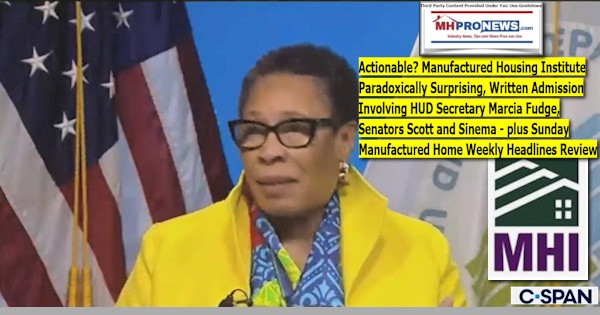
- MHI outrageously dared charge their members for a webinar to talk about MHI advocacy. Those members are already paying for advocacy, and that should include updates on how key issues and how those issues are shaping up. By contrast, MHARR is consistently giving their members and trade media, such as MHProNews/MHLivingNews, the fruits of their Washington, D.C. experience and insights.

- It is useful to periodically see how non-manufactured housing industry professionals and advocates operate, and compare that to MHI. The new report below does that. Here is the teaser. Tom Hardiman, in a rather MHARR-like fashion, uses facts and reason to show why a Biden-regime plan would be bad for Americans in general and bad for his members in particular. Doesn’t that sound like MHARR? See what Hardiman said, and see what MHARR said. There are several common points. It is MHI that is out there in their bizarre response to the same issues, see the report below for details.
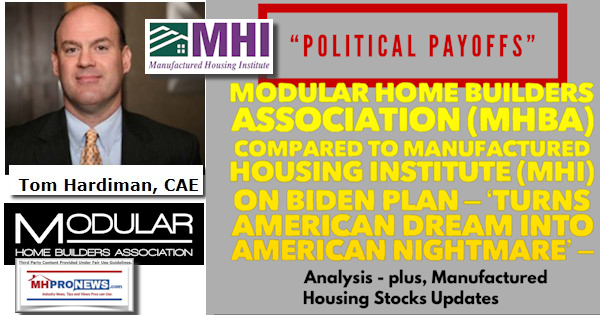
- It cannot be understated that MHARR is a bulwark and watchdog vs. the machinations of those who are consolidating manufactured housing and are arguably manipulating regulators and the marketplace of the benefit of dominating brands. As a stating-the-obvious disclosure, MHARR is a sponsor of our site, as the ads on pages reflects. That said, MHI and several MHI member brands were advertisers here too. MHProNews has taken an independent view of matters that follows the facts and the evidence. On perhaps 90 percent of the industry-specific issues that exist, MHProNews and MHARR routinely see things similarly. If there is a distinction, it is on the point of promotion and image building. But MHARR has said that their focus is regulatory, and they have urged independents to organize and push for promotion in a rival to MHI that MHARR could partner with. Put differently, MHARR and MHProNews – because each strives to follow the facts, compliment each other. Ironically, MHI leaders praised MHProNews precisely for that same quality.
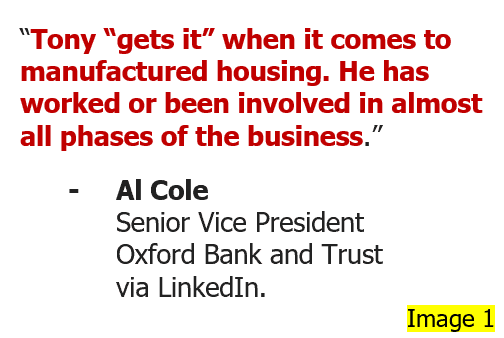
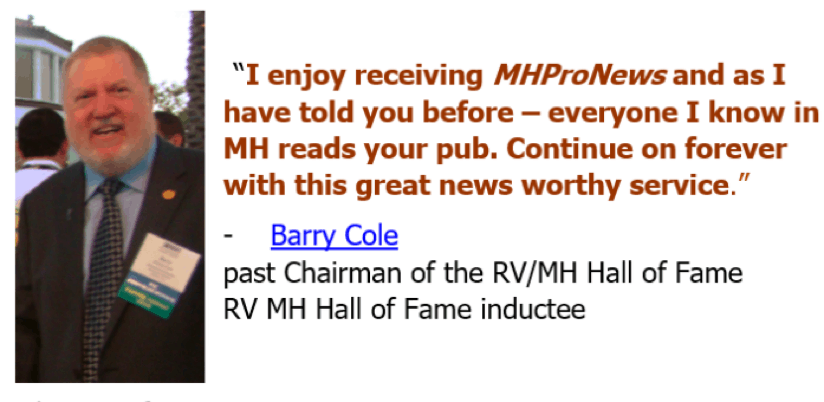
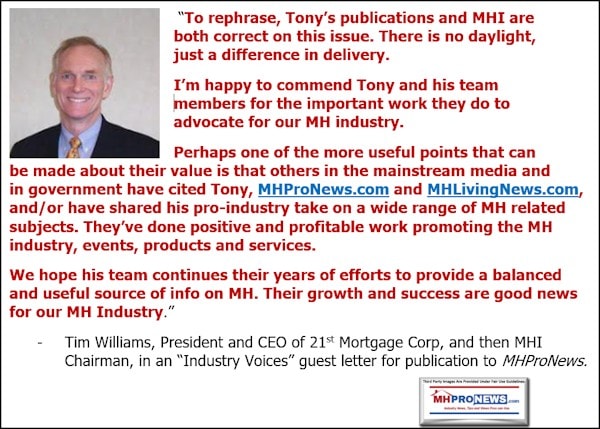
All that said, what is looming in Washington and America more broadly has so many threats from so many different sources, the need to support MHARR and stand up a pro-growth, anti-monopoly independent trade group has never been greater. See the related and linked reports to learn more.
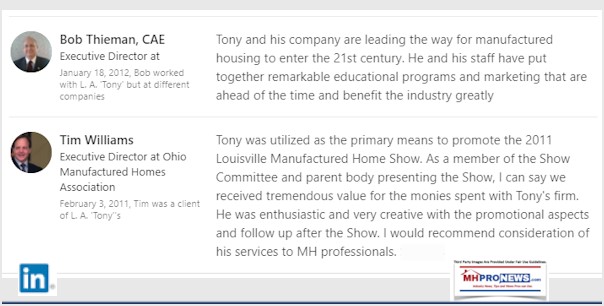

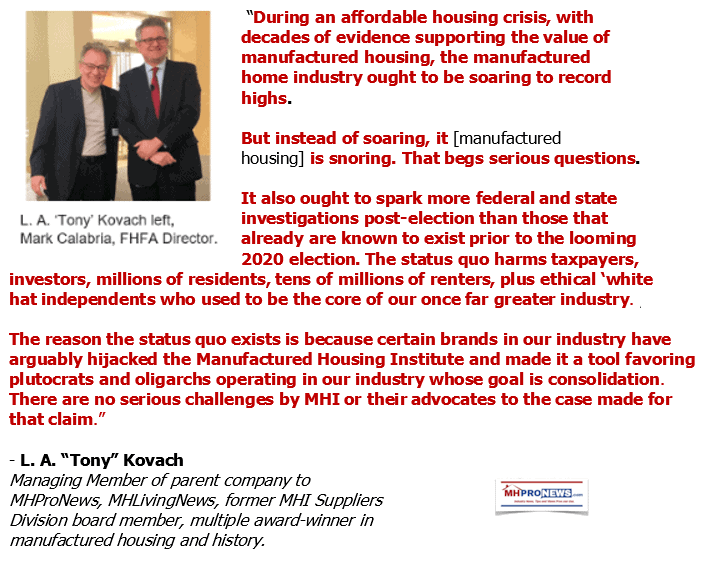
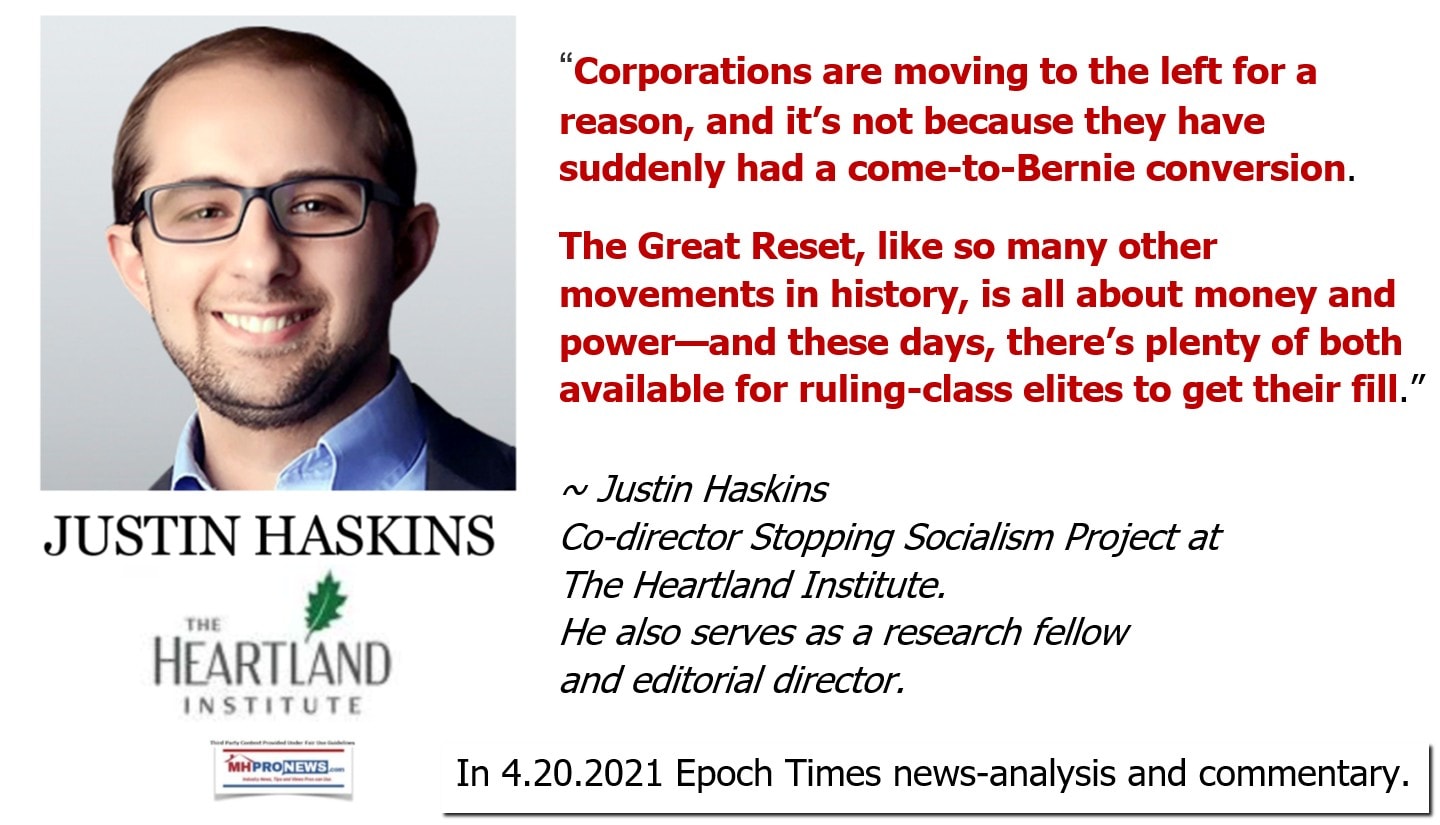
[cp_popup display=”inline” style_id=”139941″ step_id = “1”][/cp_popup]
Notice to MHI members. Follow up emails to several MHI linked attorneys – not one disputed the claim by the law firm cited in the report below. MHI has demonstrably created an ‘amen corner,’ an echo chamber that parrots their talking points. MHI and those involved have not denied that evidence-based allegation. But as, or perhaps more important, is this below. For those MHI members who are aware of what is occurring, but who fail to stand up or speak up in some form or fashion, legal experts say that it could make those members vulnerable to legal action, just as MHI is. To learn more, see the related report linked below.



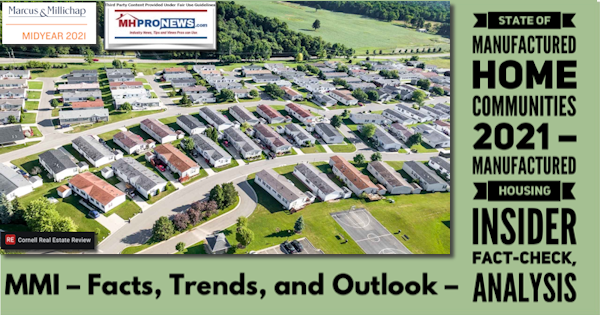

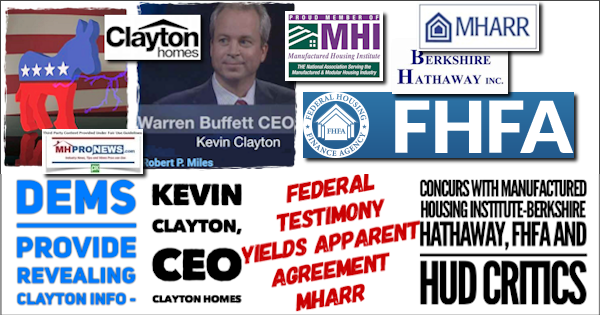
The evidence routinely points one way. No wonder why MHI, their major brands, and even their outside attorneys all went silent when it comes to engaging with MHProNews on these troubling trends and growing evidence.
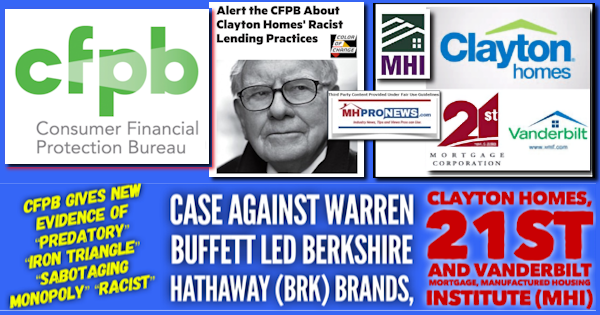
Stay tuned for more of what is ‘behind the curtains’ as well as what is obvious and in your face reports. It is all here, at the runaway largest and most-read source for authentic manufactured home “News through the lens of manufactured homes and factory-built housing” © where “We Provide, You Decide.” © ## (Affordable housing, manufactured homes, reports, fact-checks, analysis, and commentary. Third-party images or content are provided under fair use guidelines for media.) (See Related Reports, further below. Text/image boxes often are hot-linked to other reports that can be access by clicking on them.)

By L.A. “Tony” Kovach – for MHProNews.com.
Tony earned a journalism scholarship and earned numerous awards in history and in manufactured housing.
For example, he earned the prestigious Lottinville Award in history from the University of Oklahoma, where he studied history and business management. He’s a managing member and co-founder of LifeStyle Factory Homes, LLC, the parent company to MHProNews, and MHLivingNews.com.
This article reflects the LLC’s and/or the writer’s position, and may or may not reflect the views of sponsors or supporters.
Connect on LinkedIn: http://www.linkedin.com/in/latonykovach
Related References:
The text/image boxes below are linked to other reports, which can be accessed by clicking on them.


